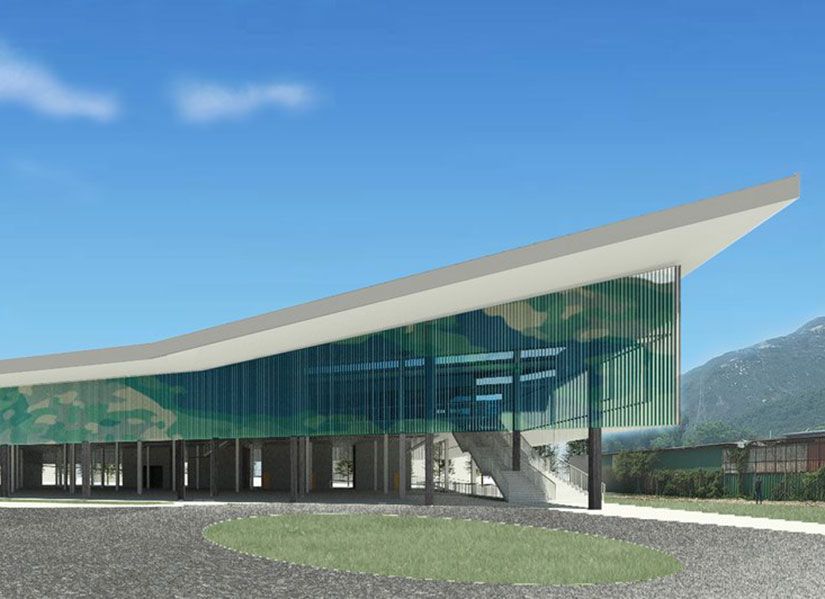
QUT Alumni, 14 November, 2022
Tony Ip’s Hong Kong based architecture firm has been leading the charge on an integrated, interdisciplinary approach to sustainability within their profession since its inception in 2017. Tony Ip himself has pursued this goal for much longer.
Graduating from QUT with a Bachelor of Built Environment in 2003, Tony has decades of experience navigating the specific challenges involved in green architecture, which considers not only the climate impact of architecture and all related disciplines, but critically, how architecture affects humans and the natural environment.
The absence of nature in urban environments is linked to specific psychological challenges. We spoke with Tony to discuss how architecture and design can anticipate and address these challenges.
How does your team of architects and designers partner with clients to further their sustainability goals and combat climate change?
Tony Ip Green Architects “TiP” are community-centric architects and designers, who specialise in sustainable design and advocate for the paradigm shift to green architecture and biophilic urban-scape at the tipping point of climate change.
Based in Hong Kong, TiP’s interdisciplinary and integrated expertise and experience drives us to achieve de-carbonising, regenerative, climate-resilient and cost-effective design ideas and project execution, especially in high-density high-rise urban contexts. Our scope of services includes urban design, master planning, architectural design, landscape design, interior design, and green material innovation, together with sustainable design and green professionals’ input throughout the whole project process.
Hong Kong is known for its high density living. How important is green space to you and your clients?
The higher we live from the ground level, the more disconnected we feel from the natural environment and the community. Compared with people residing away from metropolitan areas, urban dwellers have a lack of personal and open space. They may seek room to escape from the hustle and bustle of the city. Urban dwellers are also characterised by a more affluent living style and exhibit patterns of routine related to gaining affluence, with few opportunities for unplanned human-nature interactions, which are critical for developing neighbourhoods, a sense of community, and appreciating the natural environment and climate change.
Biophobia is a phobia that develops due to people's fear of living things and the unexpectedness of nature. In particular, urban children have been disconnecting from nature and witnessing an extinction of the human experience of wildlife. Nature is not just a resource for human consumption, but something that has intrinsic value. A quality urban living environment not only furnishes people with convenient accessibility and adaptable conditions, but also embodies welcoming communal amenities, enjoyable greenery and intimate human-nature interactions.
What have you done outside of work to live a more sustainable lifestyle?
I advocate for green living through concepts including an energy-saving, paperless office, a few reduce and recycle initiatives, a green diet as well as a low-carbon work style. For example, my colleagues cook and share lunch meals in the office, have a 'green-biz' dress code, and bring sorted waste and recyclables to the Green Community Station twice per week.

What’s the best piece of advice you have ever received?
"Don't start to build if something you really don't comprehend. The power of human intervention including architecture is able to regenerate the nature; otherwise, destroys" - Mr. Robert Skip Backus, CEO of Omega Centre for Sustainable Living.
In my visit to Omega Centre for Sustainable Living in 2010, Robert told me that “you have to know clearly how your design performs and affects the community and the nature before you really take action to construct. If you are not sure what it is, you need to wait and rethink. Otherwise, there is no action to mitigate any wrong-doing in a responsible manner of sustainability.”
Tell us about some of your volunteer work and why is this important to you?
I serve the community on a voluntary basis, as the Director of Hong Kong Green Building Council, Director of Zero Carbon Building and Director of YMCA of Hong Kong. Through these organisations, I promote green building education to the public, hoping to popularise the public's awareness of green architecture and low carbon transformation.
In addition, I am the Chairman of the Hong Kong Architecture Centre (HKAC). HKAC is committed to bridging architecture and the community – it is an NGO and a charitable institution, and our members are the general public. An enhanced awareness of the built environment helps cultivate a deeper understanding of architecture and a keener appreciation of the environment and culture, and together, we can build and better our city, our community and our future.